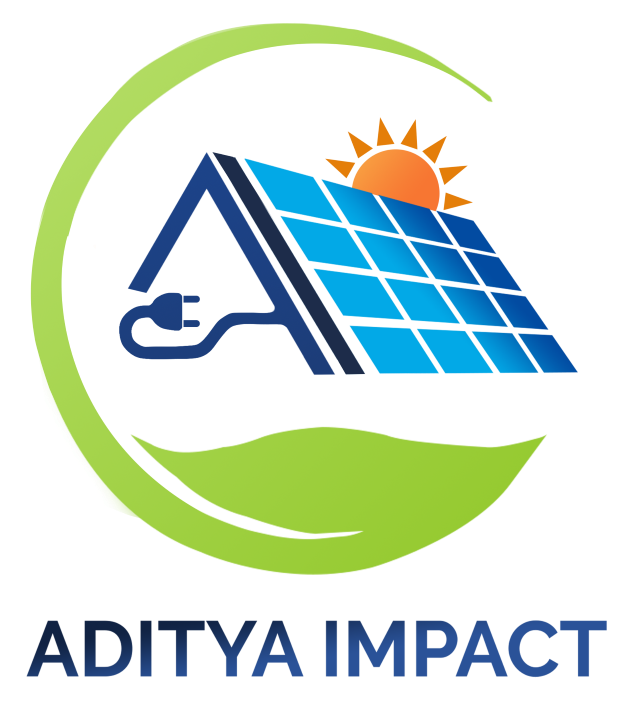FAQ
Frequently Asked Questions (FAQ)
1. How Does a Solar PV Solution Work?
A solar rooftop system typically includes solar panels (modules), inverters, and other electrical components like meters and cables. The panels capture sunlight and convert it into electricity. Any excess electricity generated can be sent back to the national electricity grid, and the owner receives credits for this surplus, depending on local regulations.
2. How Do I Determine the Right System Size for My Needs?
The required system size depends on several factors:
- Load Requirement: The energy capacity needed to meet your power demands varies by region. Typically, a 1 kW system supports a monthly bill of around Rs. 1000.
- Shadow-Free Space: For installation, each 1 kW system generally requires 100 sq. ft. of unobstructed space.
- Sanctioned Load: This is the maximum allowable capacity based on state regulations. Exceeding it is generally not permitted.
3. How Do Solar Modules Work?
Solar modules contain silicon wafers that convert sunlight into direct current (DC) electricity. When exposed to sunlight, these wafers release electrons, generating a flow of electricity, which provides a renewable and sustainable power source.
4. Can My Solar System Produce Electricity During a Grid Outage?
Standard grid-connected solar systems do not generate electricity during a grid outage. However, systems equipped with batteries can continue to generate and supply electricity even when the grid is down.
5. Is Solar Energy Wasted If No One is Home During the Day?
No, solar energy is not wasted. During the day, if the system generates excess electricity, it’s sent back to the grid, earning credits. At night, you can draw power from the grid. A meter records both the exported and imported electricity, ensuring you’re credited for excess generation.
6. What Are DCR Panels?
Domestic Content Requirement (DCR) Panels are made with solar cells and modules manufactured in India. They are required for solar projects receiving government incentives, as they support the growth of local manufacturing and job creation.
Common DCR Manufacturers: Premier, Adani, Websol, etc.
7. What Are Non-DCR Panels?
Non-DCR panels are imported from abroad and do not qualify for government subsidies or incentives. These panels are an option for projects not seeking these financial benefits.
Common Non-DCR Manufacturers: Longi, REC, Panasonic, Jinko, etc.
8. What’s More Beneficial: Subsidy or Non-Subsidy?
Both options have pros and cons:
- Subsidy:
- Pros: Lower upfront cost due to subsidies.
- Cons: Fewer module options, and the tariff rate for exported energy is lower.
- Non-Subsidy:
- Pros: Better long-term financial returns with higher export tariffs and a wider selection of modules.
- Cons: Higher initial investment.
9. Is It Worth Spending Extra on Microinverters?
If your roof has a single, shade-free plane facing south, a string inverter can be a cost-effective choice. However, most roofs have complexities, so microinverters or optimized string inverters can provide better performance. Some microinverters handle multiple panels, reducing costs without compromising efficiency.
10. Why is Panel-Level Optimization Worth Considering?
Panel-level optimization improves efficiency on roofs with shading or complex layouts. It allows you to monitor and optimize each panel’s performance, ensuring that if one panel underperforms, it won’t impact the whole system. This also allows you to track the individual output of each panel.
11. Microinverters vs. Optimized String Inverters: What’s the Difference?
- Microinverters convert DC to AC electricity directly at the panel level, whereas power optimizers send conditioned DC power to a centralized inverter for conversion.
- Microinverters have panel-level conversion and are less impacted by central inverter failures, whereas power optimizers depend on a central inverter, which, if it fails, affects the entire system.
- Warranties: Microinverters often have 25-year warranties, whereas power optimizers paired with central inverters may have shorter warranties on the inverter itself.
12. Can Microinverters Affect My Battery Storage Options?
Yes. Microinverters generally work best with AC-coupled battery storage solutions. If you plan to add battery storage, consult with your installer to ensure compatibility with your chosen inverter and battery type.
